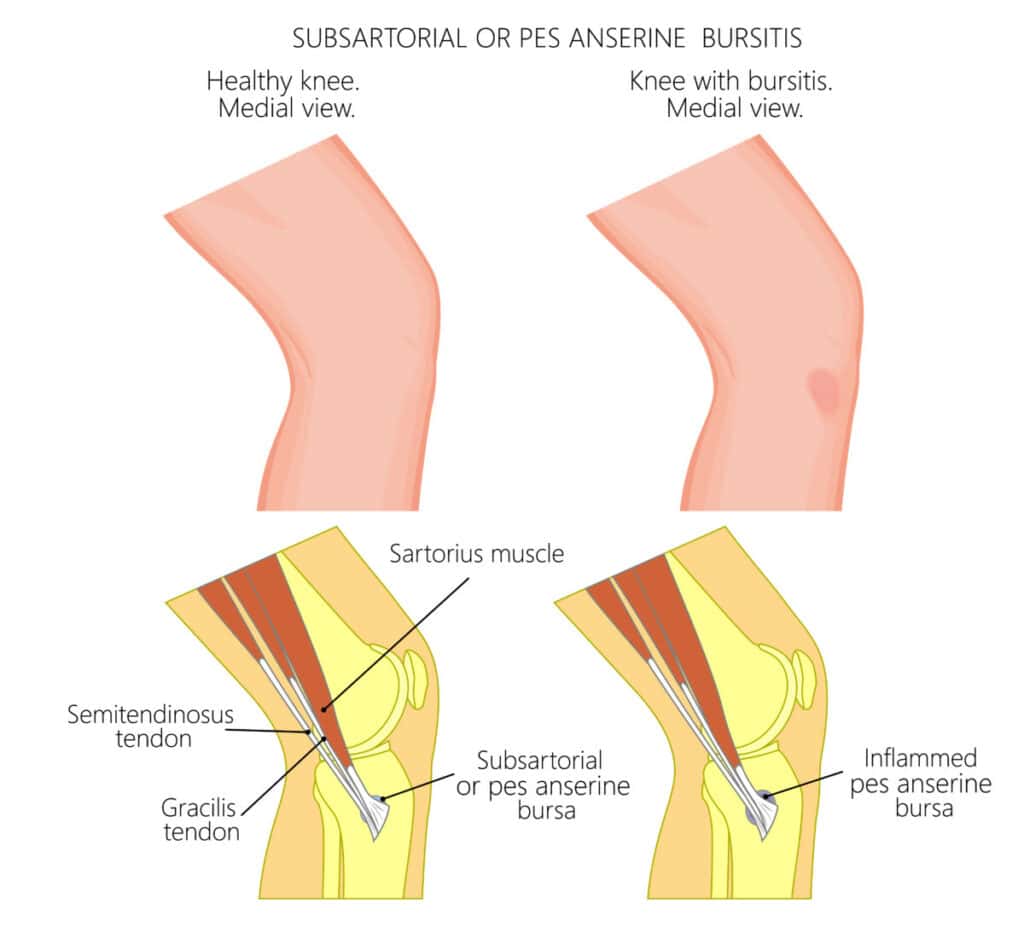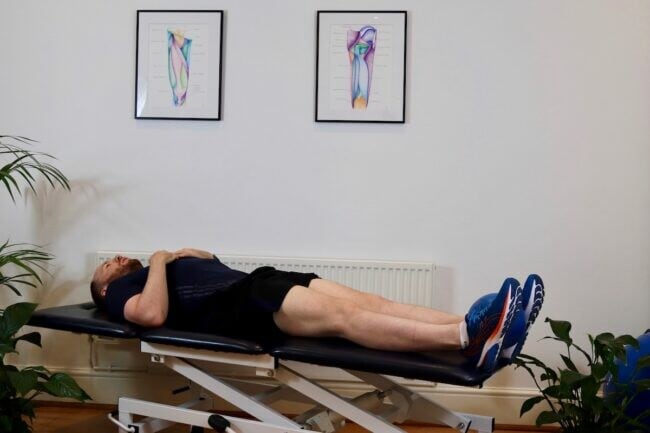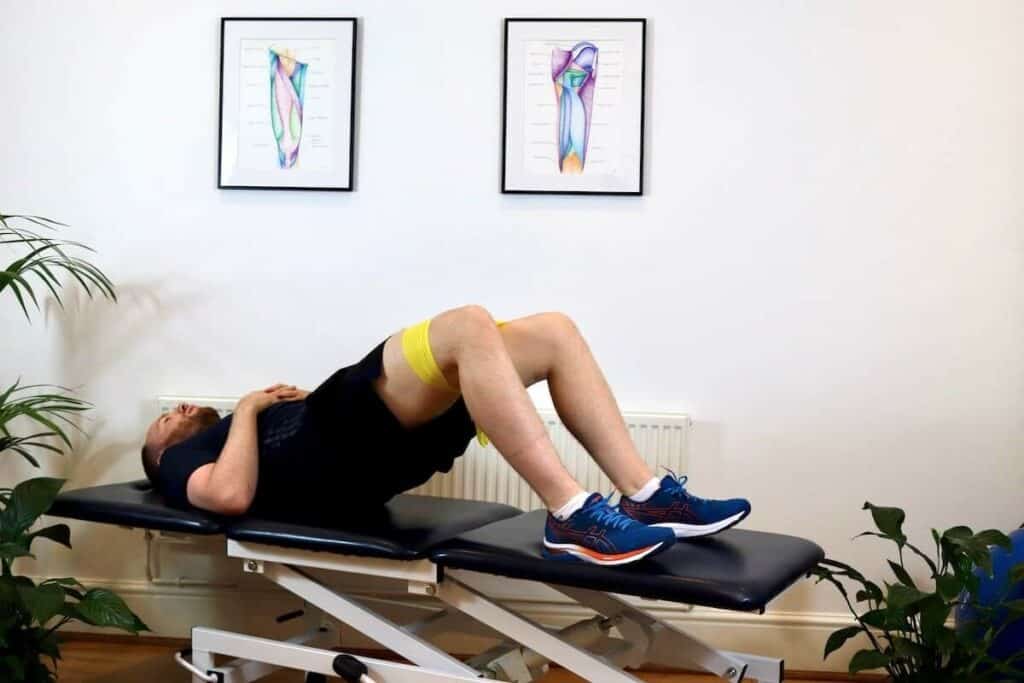Pes Anserine Bursitis
- Best Asics Shoes for Flat Feet - October 25, 2024
- Best Running Shoes for Flat Feet - October 22, 2024
- Posterior Tibial Tendonitis - October 21, 2024
What is Pes Anserine Bursitis?
The Pes Anserine, from the Latin “goose’s foot”, is a robust structure that combines the tendons of three different muscles on the inner aspect of the knee. These are the Sartorius, Gracilis, and Semitendinosus tendons. It is a superficial structure that can be palpated in the inner part of the knee, just below the joint line.
A bursa lies between the tendinous insertion and the bony part of the knee joint to prevent excessive stress on the Pes Anserine tendon. However, if excessive stress is placed on the area, the bursa may also become sensitive and inflamed, hence the term Pes Anserine bursitis.
What is the function of the Pes Anserine Bursa?
The primary function of the Pes Anserine is to provide dynamic stability of the knee joint, particularly to those forces that push the knee to fall inside (namely valgus forces). These are common forces in running, cycling and swimming (particularly breaststroking). The function of the Pes Anserine bursa instead is to reduce shear forces between the tendons and the bony portion of the knee.

Pes Anserine Bursitis Symptoms
Generally, an overload is responsible for the symptoms of Pes Anserine Bursitis. The overload may sensitise the tendons and thus cause Pes Anserine tendonitis, with common features such as pain before or after exercising and morning stiffness.
In more irritable cases, the bursa could also become sensitised and inflamed, with common symptoms such as night pain and pain at rest. Also, it is not uncommon to see some puffiness in the inner knee, likely related to swelling of the bursa. This is what is usually called Pes Anserinus bursitis.
As a general example, an over-pronated foot may cause your knee to fall inside, which in the long run could sensitise the inner structures such as the bursa or the Pes Anserine. Exercise therapy and orthotics may be a solution in this case.
What other structures can cause inner knee pain?
Several other structures could mimic the presentation of inner knee pain. The likely diagnosis may also be dependent on your age. In particular:
- Osteoarthritis of the medial knee may be a possible cause of symptoms in older patients
- Medial meniscus tear, following a traumatic injury in younger people or a degenerative tear in older adults
- Medial collateral ligament injuries following a traumatic injury during football or skiing
- Stress fractures of the proximal part of the tibia (shin bone), relevant for runners with increased and unaccustomed mileage
- Patello-femoral pain syndrome, often known as Runner’s knee
- Some conditions within the lumbar spine or the hip joint may sometimes refer to pain in the inner part of the knee, particularly in young adolescents.
Treatment
Physiotherapy
At the initial stage of bursitis or tendinopathy, pain management strategies are mainly based on ice, taping, and relative rest from those provoking activities that caused the symptoms to develop. Non-steroidal anti-inflammatory medications may also have a role in the initial stages.
In terms of physical therapy, activity modification combined with simple exercises without knee involvement are preferred to allow muscle contractions of the hamstring muscle and the quadriceps without irritating inner knee structures.
These are usually hip-dominant exercises, such as bridges, straight leg raises, clam exercises, side planks, and side leg raises. We have images and descriptions of these below.
When symptoms decrease, the focus will shift towards knee-dominant pes anserine exercises, such as squats, leg curls, step-ups, and split squats. Plyometric activities and power development will be the last stage of the process, with exercises involving jumps and hops of progressively increased difficulty.
Finally, as explained previously, for long-term results, the biomechanical causes of the injury need to be addressed as well, as in an over-pronating foot.
Exercises to Avoid
In the early or acute stages of injury, we recommend avoiding pain-provocative exercises such as lunges, deep squats, squat jumps and cross-over squats. Activities such as running, breastroke in swimming and change of direction sports such as squash, tennis and football are likely to irritate your symptoms.
Other Treatment Options
Should physiotherapy fail to address your symptoms, the second line of treatment is generally an ultrasound-guided corticosteroid injection into the bursa.
We recommend you receive an official diagnosis before trying the above, as numerous conditions, such as a medial meniscus tear, have a similar presentation to Pes Anserine Bursitis.
Rehabilitation Exercises
Adductor Squeeze

Standing Hip Adduction

Long Lever Bridge

We are specialists in treating knee conditions such as Pes Anserine Bursitis, and you can see one of our Sports Injury Physios in our clinic in Fulham, South West London. We also offer running gait analysis and biomechanical assessments. We also offer a specialist Knee Physiotherapy Clinic.
Related Articles
ACL Sprain – What is Knee Fat Pad Impingement – Proximal Hamstring Tendinopathy
